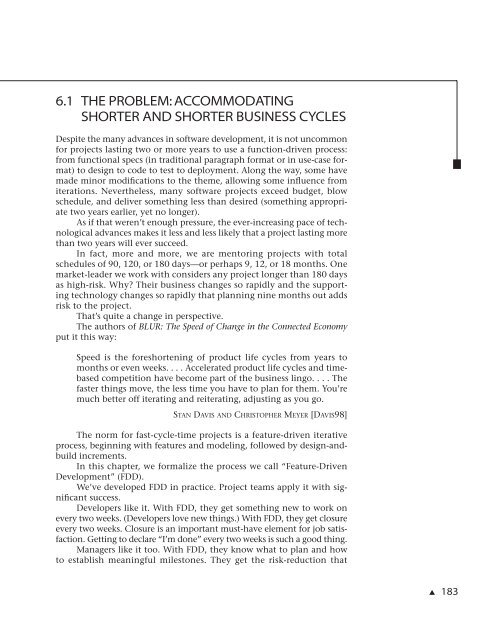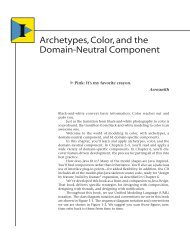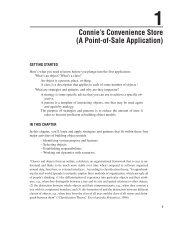Feature-Driven Development - About Peter Coad
Feature-Driven Development - About Peter Coad
Feature-Driven Development - About Peter Coad
Create successful ePaper yourself
Turn your PDF publications into a flip-book with our unique Google optimized e-Paper software.
6.1 THE PROBLEM: ACCOMMODATING<br />
SHORTER AND SHORTER BUSINESS CYCLES<br />
Despite the many advances in software development, it is not uncommon<br />
for projects lasting two or more years to use a function-driven process:<br />
from functional specs (in traditional paragraph format or in use-case format)<br />
to design to code to test to deployment. Along the way, some have<br />
made minor modifications to the theme, allowing some influence from<br />
iterations. Nevertheless, many software projects exceed budget, blow<br />
schedule, and deliver something less than desired (something appropriate<br />
two years earlier, yet no longer).<br />
As if that weren’t enough pressure, the ever-increasing pace of technological<br />
advances makes it less and less likely that a project lasting more<br />
than two years will ever succeed.<br />
In fact, more and more, we are mentoring projects with total<br />
schedules of 90, 120, or 180 days—or perhaps 9, 12, or 18 months. One<br />
market-leader we work with considers any project longer than 180 days<br />
as high-risk. Why? Their business changes so rapidly and the supporting<br />
technology changes so rapidly that planning nine months out adds<br />
risk to the project.<br />
That’s quite a change in perspective.<br />
The authors of BLUR: The Speed of Change in the Connected Economy<br />
put it this way:<br />
Speed is the foreshortening of product life cycles from years to<br />
months or even weeks. . . . Accelerated product life cycles and timebased<br />
competition have become part of the business lingo. . . . The<br />
faster things move, the less time you have to plan for them. You’re<br />
much better off iterating and reiterating, adjusting as you go.<br />
STAN DAVIS AND CHRISTOPHER MEYER [DAVIS98]<br />
The norm for fast-cycle-time projects is a feature-driven iterative<br />
process, beginning with features and modeling, followed by design-andbuild<br />
increments.<br />
In this chapter, we formalize the process we call “<strong>Feature</strong>-<strong>Driven</strong><br />
<strong>Development</strong>” (FDD).<br />
We’ve developed FDD in practice. Project teams apply it with significant<br />
success.<br />
Developers like it. With FDD, they get something new to work on<br />
every two weeks. (Developers love new things.) With FDD, they get closure<br />
every two weeks. Closure is an important must-have element for job satisfaction.<br />
Getting to declare “I’m done” every two weeks is such a good thing.<br />
Managers like it too. With FDD, they know what to plan and how<br />
to establish meaningful milestones. They get the risk-reduction that<br />
▲ 183




